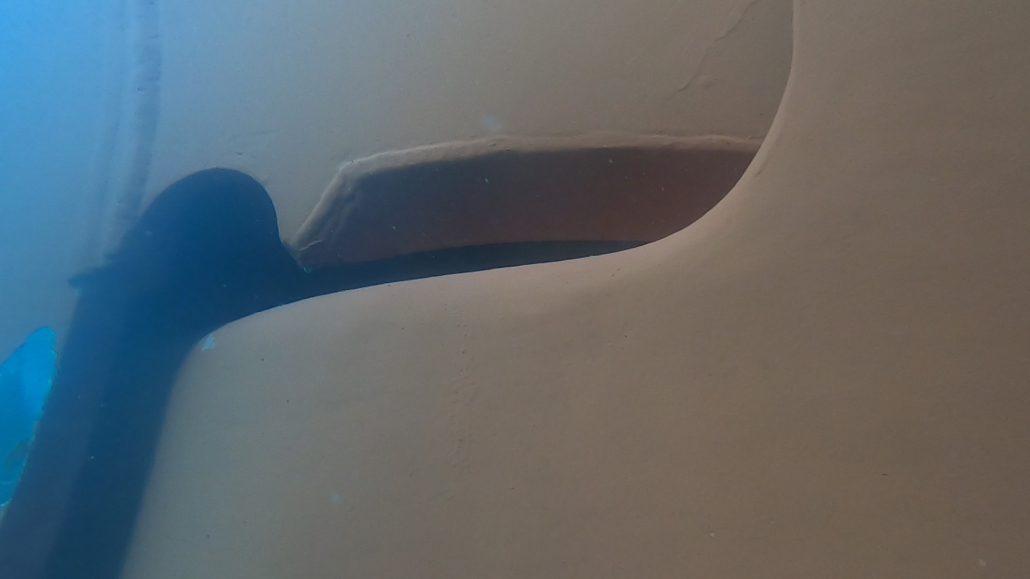UNDERWATER VIDEO INSPECTION





UNDERWATER VIDEO INSPECTION
Vessel : MV DUCHESS EMERALD
Atlantic Safi Port
November 2, 2024.
The Importance of Underwater Inspections of Ship Components
Underwater inspection of a ship’s components is a crucial step in ensuring the safety, efficiency, and longevity of the vessel. Certain parts of the ship, such as the propeller, rudder, anodes, seawater intake, and anti-roll keel, are particularly exposed to the effects of seawater, ocean currents, and varying environmental conditions. Regular maintenance and inspection of these components help prevent serious failures and ensure optimal vessel performance.
1. The Propeller
The propeller is one of the most critical components of a ship, responsible for propulsion. Due to its constant exposure to saltwater and potential impacts with underwater debris, the propeller can suffer damage such as wear, corrosion, or cavitation. These issues can lead to reduced engine efficiency, higher fuel consumption, and decreased propulsion performance. Regular underwater inspections help identify these problems before they severely affect the vessel’s performance.
2. The Rudder
The rudder, like the propeller, is essential for the maneuverability of the ship. Regular underwater inspection of this component is necessary to detect any deformation, excessive wear, or corrosion that could compromise the vessel’s ability to change direction. A failure of the rudder can make the ship difficult to maneuver, which poses a major safety risk, especially in high-traffic areas or during loading and unloading operations.
3. The Anodes
Sacrificial anodes play a key role in protecting against corrosion of the ship’s underwater metal components. They are designed to corrode preferentially, thereby protecting critical metal parts such as the hull and propellers. Regular inspection of the anodes is essential to ensure they are not overly worn and continue to provide effective protection. If the anodes are depleted or missing, increased corrosion of other metal parts can occur, compromising the structural integrity of the ship.
4. The Seawater Intake
The seawater intake is another critical component that can be subject to blockages, leaks, or corrosion due to exposure to saltwater. This intake is essential for supplying the engine cooling system and other vital onboard systems. A blockage or leak in this system can lead to engine overheating or cooling system failures, with potentially catastrophic consequences. Underwater inspection helps check for debris or corrosion and ensures that the seawater intake is functioning properly.
5. The Anti-Roll Keel
The anti-roll keel is a device designed to reduce the ship’s rolling motion, particularly in rough sea conditions. It helps maintain the vessel’s stability and ensures passenger and crew comfort. The anti-roll keel, often equipped with ballast or hydraulic mechanisms, is subjected to high pressures and needs to be regularly monitored for any deformation, cracking, or wear on seals. Regular inspection of this keel ensures that the vessel remains stable even in rough seas, contributing to the safety of passengers and crew.
Why Underwater Inspection is Crucial
Underwater inspections not only help detect potential issues at an early stage but also prevent costly repairs and prolonged downtime for the vessel. A well-maintained and regularly inspected ship will have greater longevity and reliability. Additionally, underwater inspections are an essential means of complying with international maritime regulations, which often require periodic checks of the hull and underwater equipment.
Moreover, this preventive maintenance improves the ship’s energy performance, reduces fuel consumption, and minimizes the risk of unexpected breakdowns. For example, components like the propeller or rudder, when in poor condition, can cause increased resistance in the water, forcing the engine to work harder and consume more fuel.
Conclusion
Underwater inspection of key ship components, such as the propeller, rudder, anodes, seawater intake, and anti-roll keel, is vital for ensuring optimal vessel performance and safety. By identifying potential issues before they become serious, these inspections help minimize risks, extend the life of the ship, and reduce long-term maintenance costs. They also help ensure compliance with safety standards and protect the environment by reducing the risk of spills or other maritime incidents. For all these reasons, regular underwater inspections are a strategic investment in the efficient management of maritime fleets.
4o mini

Laisser un commentaire
Rejoindre la discussion?N'hésitez pas à contribuer !